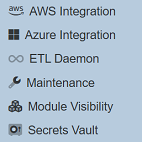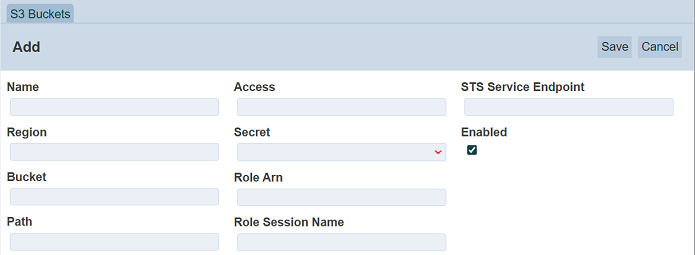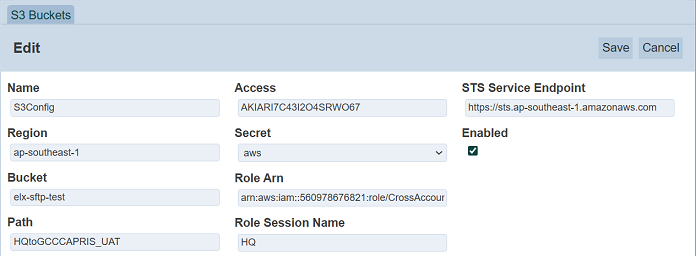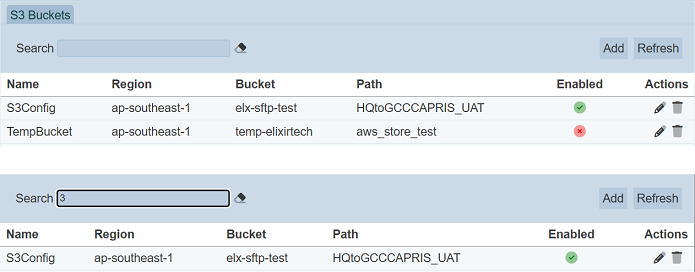AWS Integration
The AWS Integration option in the left panel allows user to integrate an Amazon Web Service (AWS) Simple Storage Service (S3) bucket to the system.

The AWS S3 bucket provides object-based storage, where data is stored inside S3 buckets in distinct units called objects instead of files.

It allows you to add, edit, delete the AWS S3 buckets.
Add
To add a S3 bucket configuration, click on the “Add” button at the upper right corner of the page.

The “Add” panel will appear.

| Field | Description | Default Value |
|---|---|---|
| Name | Unique name for the S3 bucket configuration. | None |
| Region | Region where the S3 bucket resides. | None |
| Bucket | Name of bucket to access. | None |
| Path | Path name of S3 bucket. | None |
| Access | Access point name. | None |
| Secret | Selects the secret to be used with the S3 bucket. | None |
| Role Arn | Defines the role Amazon Resource Name (ARN). | None |
| Role Session Name | Defines the role session name. | None |
| STS Service Endpoint | Defines the AWS Security Token Service endpoint. | None |
| Enabled | If selected, enables the S3 bucket. An enabled S3 bucket is represented with a green tick under the “Enabled” column, while a disabled bucket is represented with a red cross. |
Selected |
Depending on how and what type of bucket is to be accessed, the fields required may differ.
Key in an unique name for the S3 bucket (mandatory) in the “Name” field. Key in the required values in the other relevant fields. Click on the “Save” button to save the S3 bucket configuration.
If the “Name” is left empty or the name already exists, the appropriate error message will appear.


Edit
To edit an S3 bucket configuration, click on the ![]() “Edit” icon under the “Actions” column of the corresponding S3 bucket.
“Edit” icon under the “Actions” column of the corresponding S3 bucket.

The “Edit” panel will appear.

Edit the details as desired and click on the “Save” button at the upper right corner of the panel to save the changes. To abort, click on the “Cancel” button.
Delete
To delete an S3 bucket, click on the  “Delete” icon under the “Actions” column of the corresponding S3 bucket.
“Delete” icon under the “Actions” column of the corresponding S3 bucket.

A notification will appear.

There is an “Undo” button to undo the deletion. Upon clicking on the “Undo” button, the deleted S3 bucket is restored and are added back to the list of S3 buckets. Do note that the notification will disappear after some time.
Refresh
After performing actions on the browser/tab, the list is reloaded to display the list of S3 buckets. The manual “Refresh” button is available and is particularly useful if there are others making changes on the same page.
The “Refresh” button is found on the upper right corner of the page. Clicking on it reloads the list of S3 buckets.

Search
There is a cross-field search function for the list of S3 buckets. It is located at the upper left corner of the page.

This provides an easy way to search through the list of S3 buckets. It is case-insensitive and displays S3 buckets that have the entered search value in any of the values of the fields below:
- Name
- Region
- Bucket
- Path

